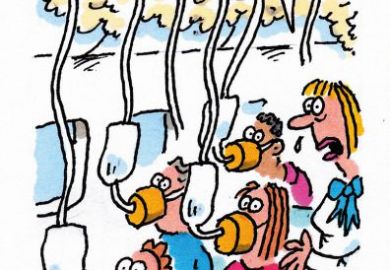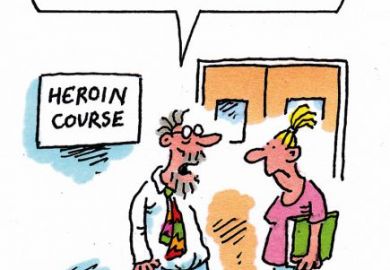
The idea of a “Scully effect” – the notion that women have been encouraged to take up careers in science by watching Gillian Anderson’s escapades as FBI agent Dana Scully in The X-Files – is nothing new. But now the theory has been backed up by, well, science. Production company 21st Century Fox asked the Geena Davis Institute on Gender in Media to investigate whether women who watched the science fiction television series were more likely to work in science, technology, engineering or mathematics – and the answer was that they were. Women who had viewed The X-Files regularly were 50 per cent more likely to work in STEM, and 63 per cent of those who worked in STEM said that Scully had been a role model for them, according to the US magazine Fast Company. It would be wishful thinking to believe that a TV series featuring an ethnic minority vice-chancellor would solve another of the academy’s diversity woes – and it’s questionable whether it would make good entertainment – but it might be a start, at least.
An official survey that aimed to assess the impact of international students on UK universities has been withdrawn after concerns were raised that it was flawed and contained loaded questions. The survey, set up by the Migration Advisory Committee – the body that advises the Home Office on immigration policy – was circulated among students to gauge their opinions on overseas classmates. But academics said that the survey did not seem to verify users, leading to risks that it could be completed by anyone, while also claiming that it contained potentially leading questions. Tanja Bueltmann, a professor of migration history at Northumbria University, said that the survey was “completely invalid and must never be used as evidence to inform policy”, the BBC reported on 18 May. The committee still appeared to defend the survey in its statement withdrawing it, stating that it “had the potential to show a very positive view of international students”. But we should probably be thankful that this latest Home Office-related immigration blooper was stopped before it became bigger news.
UCL president Michael Arthur became an obvious target for the Brexit-supporting press last week after warning that the UK risked falling to 20th in the world for higher education and research, and then conceding that the number had been “plucked…out of the air”. Professor Arthur, who made the comments during a parliamentary committee hearing on Brexit, was careful to couch his warning as a “worry” rather than a definitive statement of fact, but that didn’t stop “Project Fear Watch” from spotting an opportunity. “A university boss has admitted that he made up a claim that British universities would plummet in the world rankings because of Brexit,” was the predictable Daily Express response on 16 May. It seems that vice-chancellors have still to learn the lesson that spreading doom and gloom only plays into Leavers’ hands, but it is difficult to know what to do if you genuinely think UK research will lose out from Brexit.
It is well known that ravens tend to be the opposite of bird-brained, but now it appears that they have been managing to meddle with high-level astrophysics experiments by making icy drinks to keep cool. According to a Forbes article on 15 May, the birds have caused a lot of head scratching at the Advanced Laser Interferometer Gravitational-Wave Observatory in the US by pecking away ice from frozen pipes in a bid to create their own “snow cones” (a kind of slushy ice drink). Of course, pecking pipes intended to help pick up the faintest ripples in space-time played havoc with the academics’ work until a graduate student managed to prove that the ravens were to blame. But at least the birds had a logical motive, unlike the weasel that managed to shut down Europe’s Large Hadron Collider by chewing through some cables, electrocuting itself in the process, presumably just for kicks.
All eyes were on Windsor at the weekend for the wedding of Prince Harry and Meghan Markle – and, while academia as a whole might be more resistant than the general population to the charms of royal nuptials, it certainly kept two engineering students at the University of Cambridge occupied. James Gard and Jamill Jami used Lego to build brick likenesses of the bridge and groom as well as St George’s Chapel, the wedding venue, BBC Radio Cambridgeshire reported. “Tidying the place up took almost as long though, and we’re pretty sure we’ll be treading on the odd rogue piece for weeks to come,” the broadcaster noted.
Register to continue
Why register?
- Registration is free and only takes a moment
- Once registered, you can read 3 articles a month
- Sign up for our newsletter
Subscribe
Or subscribe for unlimited access to:
- Unlimited access to news, views, insights & reviews
- Digital editions
- Digital access to THE’s university and college rankings analysis
Already registered or a current subscriber?



